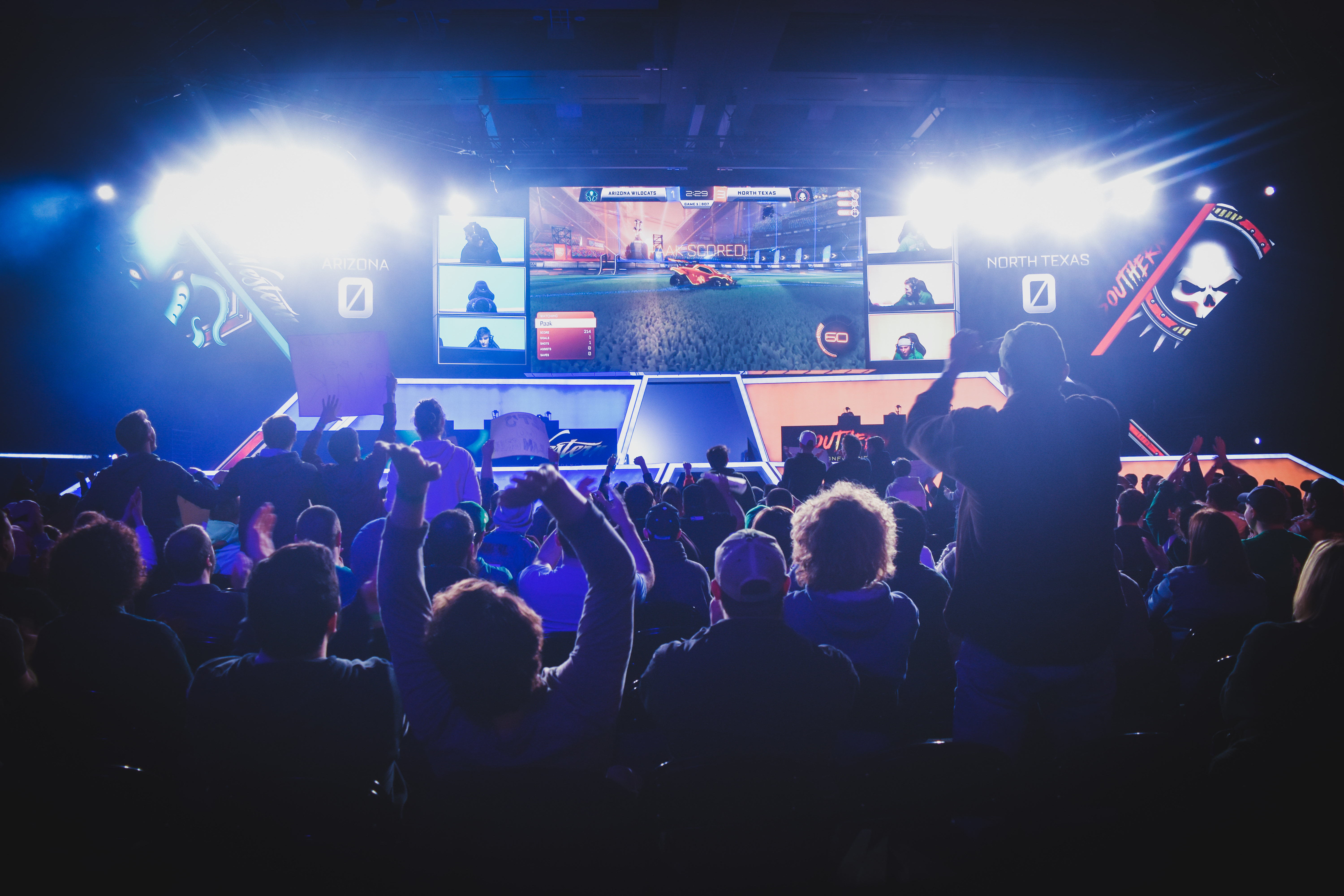Tom Brock, “Roger Caillois and E-Sports: On the Problems of Treating Play as Work,” Games and Culture, Vol. 12, No. 4 (2017): 333.
“Why Do Esports Pros Retire So Young and What Can They Do Next?” ENUK, Esports News UK, June 26, 2015, ➝.
With headquarters in Kansas City, Missouri, Populous was formed in 2009 through a management buyout of HOK Sport Venue Event, a member of HOK Group Inc.
Mitch Reames, “What Sets Dedicated Esports Arenas Apart from Traditional Stadiums,” SportTechie, August 24, 2018, ➝.
Patrick Sisson, “Esports’s Rise, and Hunger for Stadiums, Points to Adaptive Reuse Potential,” Curbed, June 28, 2018, ➝.
T. L. Taylor, Raising the Stakes: E-Sports and the Professionalization of Computer Gaming (Cambridge: MIT Press, 2012), 243.
See: Mark Wigley, Buckminster Fuller Inc.: Architecture in the Age of Radio (Zürich: Lars Müller Publishers, 2015).
Paul Ford, “The American Room,” Medium (The Message), July 30, 2014, ➝.
Brock, 333; and Graeme Kirkpatrick, Computer Games and the Social Imaginary (Cambridge: Polity, 2013).
“Populous Designs the Gaming House of the Future,” November 1, 2018, ➝.
See, for example, essays in the recent special issue of Architectural Design on “Design for Health,” (ed. Terri Peters) such as: Corbett Lyon, “Humanist Principles, Sustainable Design and Salutogenics,” Architectural Design (2017).
See: Aaron Antonovsky, Health, Stress, and Coping (San Francisco: Jossey-Bass, 1979); and Antonovsky, “The Salutogenic Model as a Theory to Guide Health Promotion,” Health Promotion International, Vol. 11, No. 1 (1996): pp. 11–18.
See Anson Rabinbach, The Human Motor: Energy, Fatigue, and the Origins of Modernity (New York: Basic Books, 1990); Zeynep Çelik Alexander, Kinaesthetic Knowing: Aesthetics, Epistemology, Modern Design (Chicago: The University of Chicago Press, 2017).
See: Arline T. Geronimus, “‘Weathering’ and Age Patterns of Allostatic Load Scores Among Blacks and Whites in the United States,” American Journal of Public Health, Vol. 96, No. 5 (May 2006); and Jason Corburn, Healthy City Planning: From Neighborhood to National Health Equity (New York: Routledge, 2013).
Linda P. Fried qtd. In David J. Craig, “The Science of Healthy Aging,” Columbia Magazine (Winter 2018), ➝.
“Ari Kiev, Psychiatrist to Traders, Dies,” New York Times, Dealbook, November 30, 2009, ➝.
“An Inside Look at Pinterest’s Creative Culture,” Highfive, ➝.
Dave Lee, “The Real Scars of Korean Gaming,” BBC News, June 5, 2015, ➝.
See: Cherie Armour and Jana Ross, “The Health and Well-Being of Military Drone Operators and Intelligence Analysts: A Systematic Review,” Military Psychology, Vol. 29, Issue 2 (2017): pp. 83-98; Sarah McCammon, “The Warfare May Be Remote But The Trauma Is Real,” NPR, “All Things Considered,” April 24, 2017, ➝; and Dan Gettinger, “Training Drone Pilots,” Center for the Study of the Drone at Bard College, June 29, 2015, ➝.
Eric Van Allen, “League of Legends Pro Attributes Poor Performance to Indulging ‘Sensual Pleasures,’” Kotaku, August 11, 2017, ➝.
“Chinese LoL Pro Vasilii Beats Girlfriend Whilst Streaming and Gets Arrested,” Dexerto, October 26, 2017, ➝.
Philip Rieff, The Triumph of the Therapeutic: Uses of Faith After Freud {1966} (Chicago: The University of Chicago Press, 1987), 26.
Rieff, 26, 27.
See: Jonathan Crary, 24/7: Late Capitalism and the Ends of Sleep (New York: Verso, 2013); and Anne Helen Petersen, “How Millennials Became the Burnout Generation,” Buzzfeed, January 5, 2019, ➝.
Peter Sloterdijk, You Must Change Your Life: On Anthropotechnics {2009}, trans. Wieland Hoban (Cambridge: Polity Press, 2013), 94.
Sloterdijk, 441.
Tim Newcomb, “Introducing Populous’ Living Park, an exclusive baseball stadium for the future,” Sports Illustrated, March 13, 2014, ➝.
Sloterdijk, 441.
John Tresch, “Anthropotechnics for the Anthropocene,” Technosphere Magazine (November 2016), ➝.
See Donna Haraway’s discussion of Never Alone in Staying with the Trouble: Making Kin in the Chthulucene (Durham: Duke University Press, 2016), 86–89.
Pippin Barr, “Consider the Gunshot,” in Videogames: Design/Play/Disrupt, ed. Marie Foulston and Kristian Volsing (London: V&A Publishing, 2018), 84, 87.
The Editors, “The Best of a Bad Situation,” N+1, Issue 33, “Overtime” (Winter 2019), ➝.
See: Timothy Morton, Humankind: Solidarity with Non-Human People (New York: Verso, 2017); and Morton, “Subscendence,” e-flux, Journal No. 85 (October 2017), ➝. For a recent discussion toward reworking habits of attention from within architecture, see: Andrew Atwood, Not Interesting: On the Limits of Criticism in Architecture (Applied Research and Design Publishing, 2018).
See: Haraway. Lewis Gordon, “Gaming's Climate Dread in a 4K Streaming Ecosystem,” Vice, June 21, 2019, ➝.
